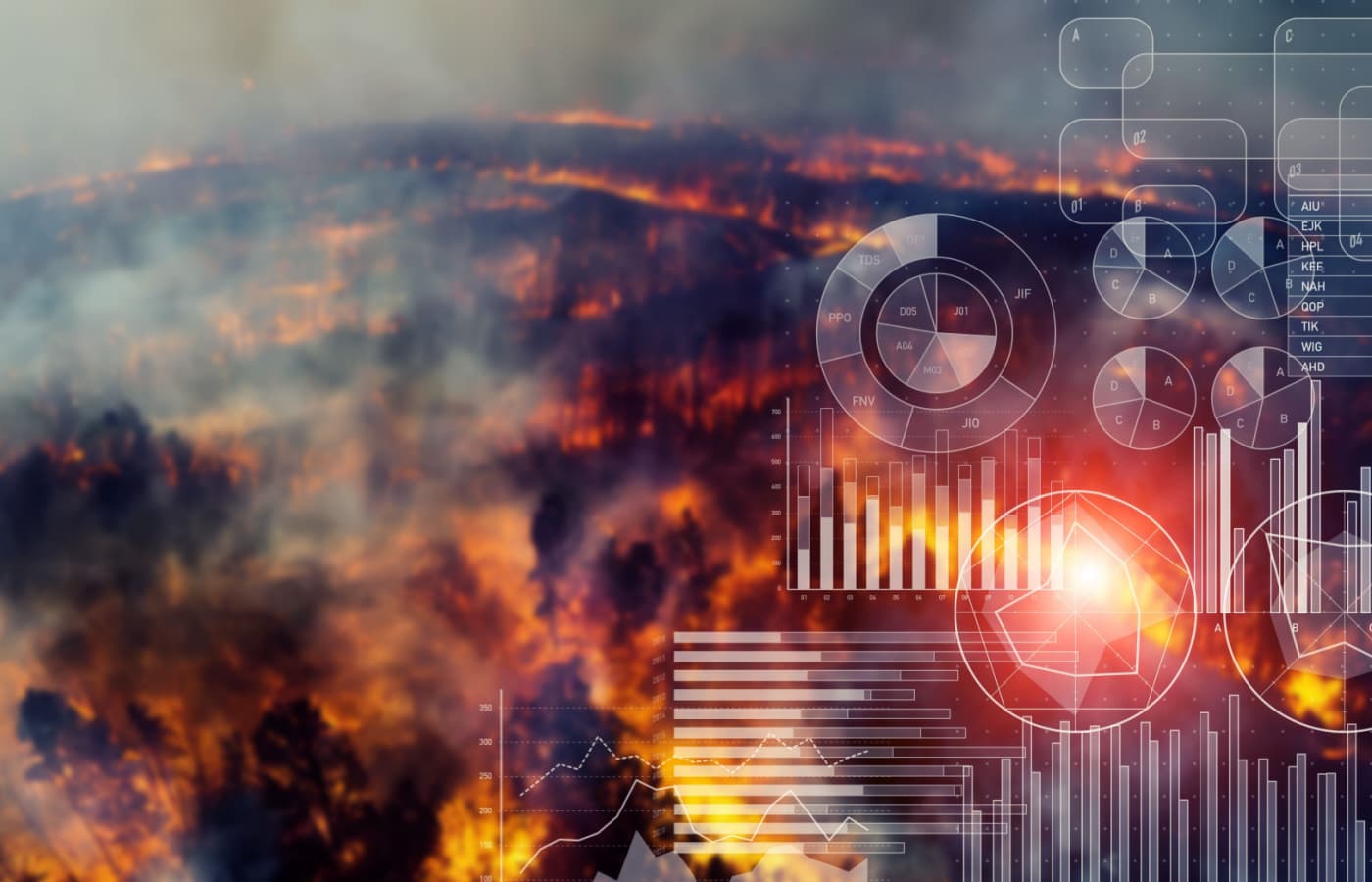The Use of AI in Disaster Management and Relief Efforts

The Use of AI in Disaster Management and Relief Efforts
In recent years, natural disasters have become more frequent and more severe. From hurricanes and earthquakes to wildfires and floods, these catastrophic events have caused widespread destruction and displacement. With the rise of technology, one tool that has been increasingly used in disaster management and relief efforts is artificial intelligence (AI).
What is AI?
AI refers to the simulation of human intelligence in machines that are programmed to think and act like humans. This includes the ability to learn, reason, and make decisions. AI uses algorithms and large amounts of data to analyze and make predictions, often in a fraction of the time it would take a human.
How is AI used in disaster management?
During and after a disaster, AI can play a crucial role in collecting and analyzing data to assist relief efforts. This can include using satellite imagery to assess damage, analyzing social media posts to identify areas in need of aid, and predicting the path of a storm or the spread of a wildfire.
Additionally, AI can be used to coordinate and optimize rescue efforts. For example, drones equipped with AI technology can assist in search and rescue operations, and robots can be deployed to clear debris and detect potential hazards.
Benefits of AI in disaster management
One of the main benefits of using AI in disaster management is the speed at which information can be gathered and analyzed. In a crisis situation, where time is of the essence, having quick and accurate data can save lives.
Another advantage is the ability to process vast amounts of information. This not only makes it easier to identify areas in need of assistance, but it also allows for more efficient allocation of resources. This can be crucial in situations where resources are limited.
Impacts on Relief Efforts
AI can also have a significant impact on relief efforts. By predicting the path of a storm or the spread of a fire, organizations can better prepare and allocate resources in the affected areas. This can help mitigate the impact of the disaster and save lives.
Furthermore, AI can be used to analyze data from social media to identify areas in need and connect those in need with volunteers and resources. This can improve the efficiency and effectiveness of relief efforts.
The Future of AI in Disaster Management
As technology advances, so does the potential for AI to play an even more significant role in disaster management and relief efforts. With the increasing capabilities of AI, we can expect to see more accurate predictions and better coordination of relief efforts.
AI can also help communities prepare for potential disasters through the use of simulation models. This can aid in identifying potential risks and planning for evacuation or response strategies.
Conclusion
In conclusion, AI is a valuable tool in disaster management and relief efforts. With its ability to quickly gather and analyze data, it can save lives and improve the efficiency of relief efforts. As technology continues to advance, the use of AI in disaster situations is sure to grow, making a positive impact on communities affected by disasters.
"The only thing faster than technology is the speed at which it evolves."
Transforming Customer Experience with AI
Transforming Customer Experience with AI
Customer experience is a crucial aspect of any business. It can make or break your relationship with your customers. In this fast-paced digital world, customers expect quick and personalized service, and if they don't get it, they will simply move on to your competitors. That's where AI comes in to transform the game.
What is AI?
Artificial intelligence (AI) is the simulation of human intelligence processes by computer systems to solve complex problems, learn from data, and make decisions. In simpler terms, it's like giving machines the ability to think and act like humans.
How AI is revolutionizing customer experience?
AI is revolutionizing the way businesses interact with their customers. With the help of AI, businesses can analyze large amounts of data and gain valuable insights into their customers' preferences and behavior.
AI-powered chatbots are the perfect example of how AI is transforming customer experiences. These chatbots are available 24/7 and can handle multiple conversations at once. They can quickly understand the customer's query and provide relevant solutions, making the customer feel heard and valued.
Moreover, AI can help businesses personalize their services for each customer. By analyzing customer data, AI can offer tailored recommendations and promotions that will improve customer satisfaction and retention.
The future of AI in customer experience
The possibilities of AI in customer experience are endless. We are just scratching the surface of what AI can do for businesses and their customers.
In the future, we can expect AI to play a more significant role in providing seamless and personalized customer experiences. From predicting customer needs to automating routine tasks, AI will continue to enhance the way businesses connect with their customers.
Final thoughts
AI is not here to replace humans; instead, it is here to enhance our capabilities and improve our lives. By embracing AI in customer experience, businesses can build strong relationships with their customers and stay ahead of the competition.
In the end, it's all about creating a delightful customer experience, and AI is a powerful tool to achieve just that. So, are you ready to transform your customer experience with AI?
Image source: https://www.pexels.com/photo/business-man-technology-phone-3726119/
Analyzing Human Behavior with AI

Understanding Human Behavior with AI
Human behavior has always been a complex subject to study and understand. From the way we communicate to the way we make decisions, our actions and reactions are influenced by a multitude of factors. With the advancements in technology, specifically in Artificial Intelligence (AI), we now have more tools to analyze and decipher human behavior than ever before.
So what exactly is AI and how does it help in understanding human behavior? AI refers to the development of computer systems that can perform tasks that typically require human intelligence, such as visual perception, speech recognition, and decision-making. Through machine learning and deep learning algorithms, AI can identify patterns and make predictions based on vast amounts of data.
The Role of AI in Analyzing Human Behavior
AI has the ability to analyze massive amounts of data in a fraction of the time that it would take a human. This allows for a more comprehensive understanding of human behavior, as it can identify patterns and trends that may not be obvious to the human eye.
One of the key ways AI helps in analyzing human behavior is through sentiment analysis. Using natural language processing, AI can analyze written or spoken language to determine the emotional tone or attitude of the person. This can be applied to social media posts, customer reviews, or even in focus groups to understand how people feel about a particular topic or product.
AI can also be used to analyze facial expressions and body language. This has been particularly useful in understanding nonverbal communication, which makes up a significant portion of our daily interactions. By analyzing microexpressions and body movements, AI can infer a person's mood and intentions.
The Benefits of Using AI in Understanding Human Behavior
One of the most significant benefits of using AI to analyze human behavior is its objectivity. Unlike humans, who may have biases and personal opinions, AI is not influenced by emotions or preconceived notions. This allows for a more accurate and unbiased analysis of human behavior.
Additionally, AI can analyze data in real-time, providing insights and predictions almost instantly. This can be incredibly useful in understanding customer behavior and making informed business decisions. For example, retailers can use AI to analyze customer data and predict buying patterns, allowing them to stock up on products that are in higher demand.
The Future of AI in Analyzing Human Behavior
As technology continues to advance, so will the capabilities of AI in understanding human behavior. With the integration of AI in various industries, from healthcare to marketing, we can expect to see a more in-depth understanding of what drives human behavior and decision-making.
There are, of course, concerns about the ethical implications of using AI to analyze human behavior. It's essential to ensure that the data used is collected ethically and that the technology is used responsibly.
In Conclusion
The combination of AI and human intelligence has immense potential in understanding human behavior. By harnessing the power of technology, we can gain deeper insights into our actions and make better-informed decisions. As AI continues to evolve, it will undoubtedly play a crucial role in shaping our understanding of human behavior in the future.
About
Welcome to JinnJot.com, your go-to hub for a wide range of captivating blogs! Whether you're curious about the latest in finance, fascinated by geology, pondering deep philosophical questions, or just want to explore the realms of religion, culture, sports, and entertainment, JinnJot has it all. It's a vibrant space where ideas come to life, and every topic is an adventure. Dive in, discover something new, and join the conversation—because at JinnJot.com, there's always more to explore!
-Djinn





